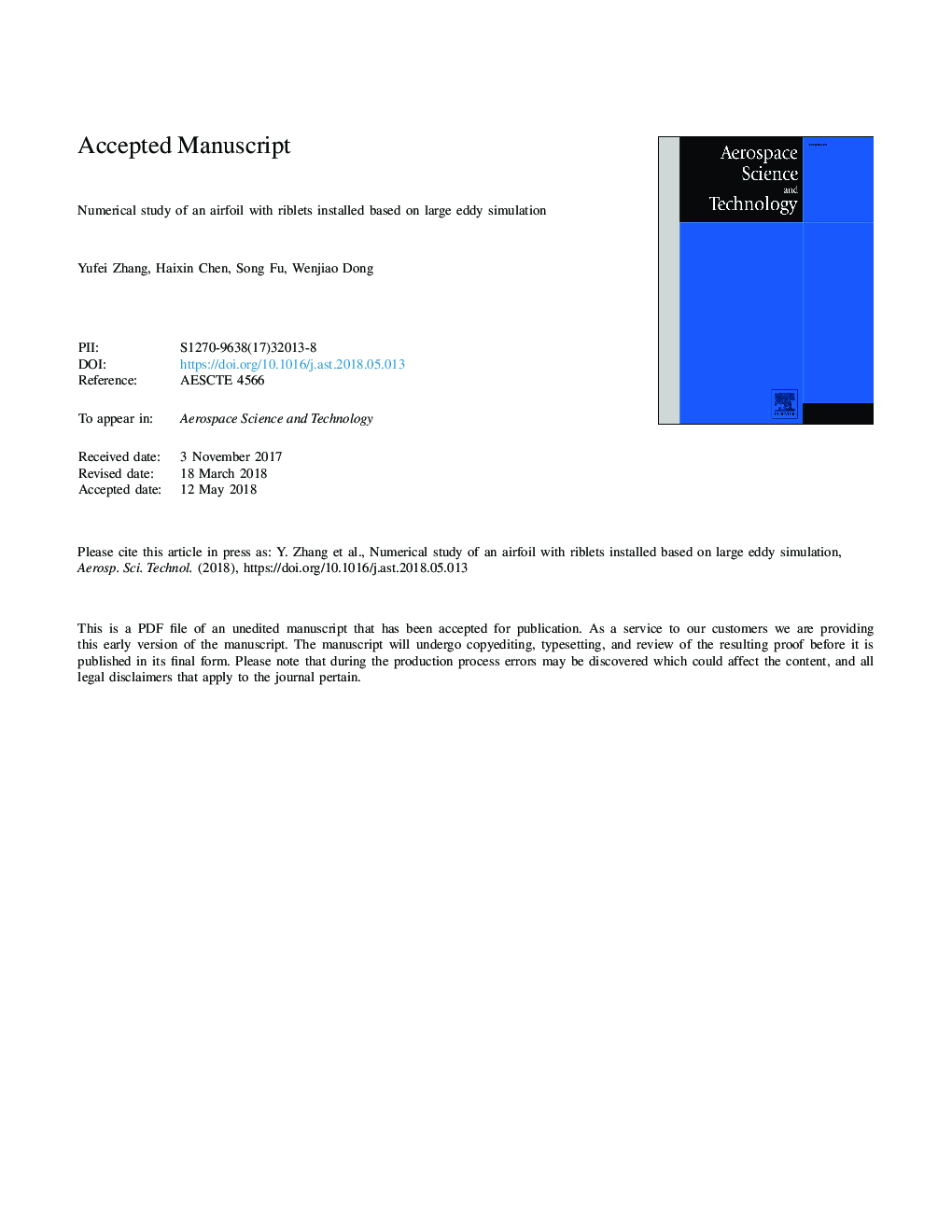| Article ID | Journal | Published Year | Pages | File Type |
|---|---|---|---|---|
| 8057581 | Aerospace Science and Technology | 2018 | 20 Pages |
Abstract
The implicit large eddy simulation method is applied in a riblet drag reduction study of a low-speed airfoil. The numerical method is tested by a channel flow with streamwise riblets installed on one side. The mean velocity profile, root mean square of velocity and Reynolds shear stress match well with reference direct numerical simulation data. Next, numerical investigation is conducted on an airfoil called Eppler E374 at free stream Mach number 0.2, angle of attack 3° and Reynolds number 2.0 à 105. The simulated flow around the airfoil without or with a numerical trip is in good agreement with the experimental data. When isosceles triangle riblets are installed on the airfoil along the streamwise direction, the lift coefficient is increased, and the friction drag is decreased. The pressure distribution on the airfoil is slightly changed, corresponding to the increased pressure drag. The Reynolds stresses are greatly reduced by the riblets at locations of strong pressure gradient. The result of the power spectrum density of pressure shows that the high-frequency fluctuations are suppressed when the riblet film is installed on the airfoil, and the vortex structures in the boundary layer are also reduced.
Related Topics
Physical Sciences and Engineering
Engineering
Aerospace Engineering
Authors
Yufei Zhang, Haixin Chen, Song Fu, Wenjiao Dong,
